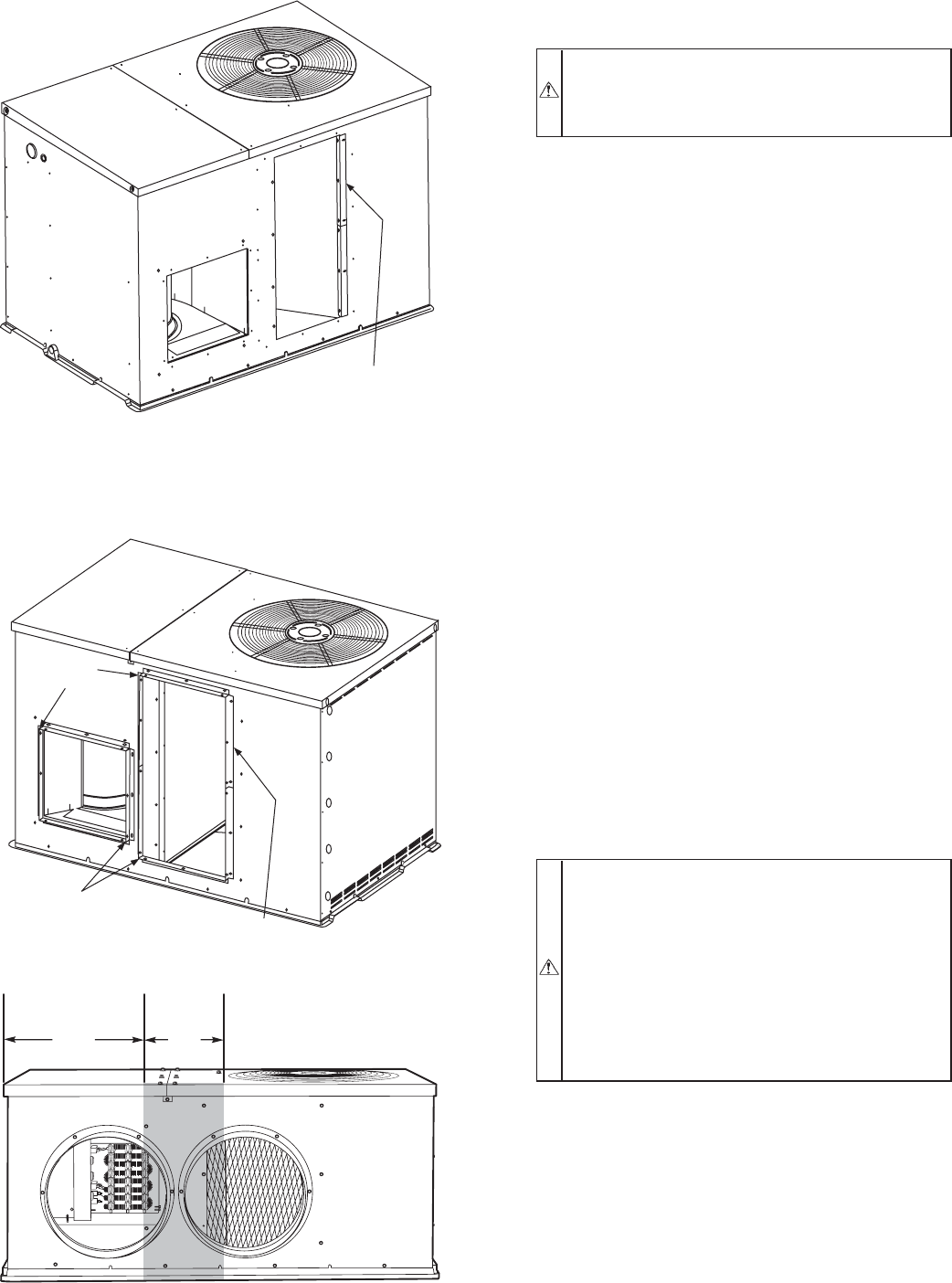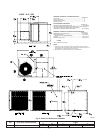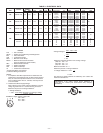
B. CONVERTING HORIZONTAL DISCHARGE UNITS TO
DOWNFLOW (Vertical) DISCHARGE
WARNING: Before performing service or maintenance
operations on system, turn off main power to unit. Turn
off accessory heater power switch if applicable. Electrical
shock can cause serious injury or death.
Units are dedicated side supply products. They are not convertible
to vertical air supply. A field-supplied plenum must be used to
convert to vertical air discharge.
VI. PROVIDE FOR CONDENSATE DISPOSAL
NOTE: Be sure that condensate-water disposal methods comply
with local codes, restrictions, and practices.
Unit removes condensate through a 1-3/64-in. ID hole which is
located at the end of the unit. See Fig. 2-4 for location of
condensate connection.
Condensate water can be drained directly onto the roof in rooftop
installations (where permitted) or onto a gravel apron in ground-
level installations. Install a field-supplied condensate trap at end of
condensate connection to ensure proper drainage. Make sure that
the outlet of the trap is at least 1 in. lower than the drain-pan
condensate connection to prevent the pan from overflowing. See
Fig. 9A and 9B. Prime the trap with water. When using a gravel
apron, make sure it slopes away from the unit.
If the installation requires draining the condensate water away
from the unit, install a 2-in. trap using a 3/4-in. OD tube or pipe.
See Fig. 9A and 9B. Make sure that the outlet of the trap is at least
1 in. lower than the unit drain-pan condensate connection to
prevent the pan from overflowing. Prime the trap with water.
Connect a drain tube using a minimum of 3/4-in. PVC, 3/4-in.
CPVC, or 3/4-in. copper pipe (all field supplied). Do not undersize
the tube. Pitch the drain tube downward at a slope of at least 1 in.
for every 10 ft of horizontal run. Be sure to check the drain tube
for leaks. Prime trap at the beginning of the cooling season
start-up. Allowable glues for condensate trap connection are:
Standard ABS, CPVC, or PVC cement.
VII. INSTALL ELECTRICAL CONNECTIONS
WARNING: The unit cabinet must have an uninter-
rupted, unbroken electrical ground to minimize the pos-
sibility of personal injury if an electrical fault should
occur. This ground may consist of an electrical wire
connected to the unit ground in the control compartment,
or conduit approved for electrical ground when installed
in accordance with NEC (National Electrical Code),
ANSI (American National Standards Institute)/NFPA
(latest edition) (in Canada, Canadian Electrical Code
CSA C22.1) and local electrical codes. Failure to adhere
to this warning could result in serious injury or death.
Fig. 5—Shipping Location of Duct Flanges
(Size 060 Only)
C00005
FIVE PIECES OF DUCT
FLANGE ATTACHED
HERE FOR SHIPMENT
Fig. 6—Flanges Installed on 564A060 Units
C00006
HAND
FORM
HAND FORM
STRAIGHT PIECE
Fig. 7—Area Not to Be Drilled More Than 3/4-in.
C00007
19.17″ 3.92″
—6—


















